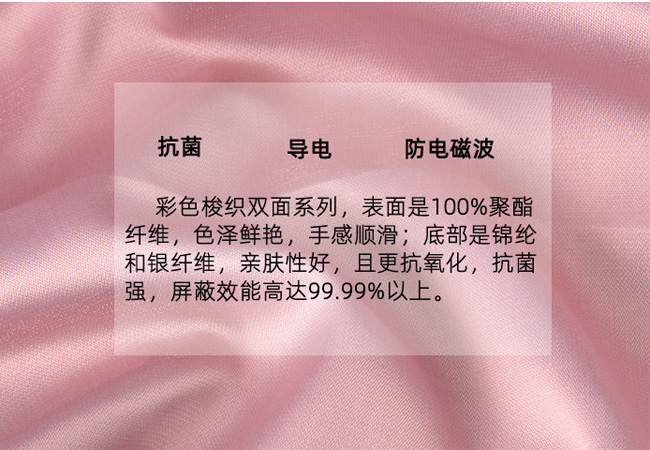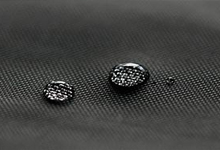Waterproof fabric·
1. The background of fluorine-free waterproofing agent and the difference between various waterproofing agents
2. Waterproofing principle and finishing process
p>
3. Waterproof and breathable fabrics
4. Classification and technology of coated fabrics
5. Classification and technology of composite fabrics
6. Waterproof , antifouling, hydrostatic pressure, air permeability, water repellency, moisture permeability test

Fluorine-free waterproofing agent production background and various Differences between similar waterproofing agents
Organofluorine chemicals PFOS and PFOA, which are often used in the international market for “three-proof” finishing of textiles, are potentially harmful to human health. Since there is currently no effective method at home and abroad to solve the pollution problem of PFOS and PFOA, finding surfactants that can replace PFOS and PFOA has become the primary issue that needs to be solved in the additive industry. The ban on PFOS has officially come into effect as early as June 27, 2008. The EU’s “Directive on Restrictions on the Sales and Use of Perfluorooctane Sulfonate” stipulates that PFOS is sold on the EU market as a constituent substance, or the concentration or quality of the element is equal to If the concentration or mass of PFOS used in finished products and semi-finished products is equal to or exceeding 0.1‰, the finished products, semi-finished products and parts will also be banned from sale. This marks that the EU has officially banned the use of PFOS in commodities.
The complete ban on PFOA has also become a general trend. On October 17, 2014, Germany implemented strict restrictions on the use of PFOA (perfluorooctanoic acid) based on REACH regulations. This proposal would restrict PFOA and its related substances (linear and branched chain derivatives), or substances or mixtures containing PFOA ingredients, from being manufactured, used or put on the market. In addition, Norway has implemented strict restrictions on the use of PFOA on June 1, 2014. At present, the European Union has put forward restrictions on PFOA and PFOA salts, and it is listed as a substance of very high concern (SVHC) in the REACH regulations. However, as people’s safety requirements for consumer products increase, PFOA is likely to be included in the list of restricted substances in the REACH regulations. (RSL), whose use is strictly controlled throughout the EU.

The content of PFOA and PFOS in carbon eight waterproofing agent is basically maintained at 70-80ug/㎡. The prohibited substances seriously exceed the standards and do not meet the standards. Environmental requirements. According to current international testing standards, the PFOA and PFOS content in carbon six waterproofing agents is below the detection limit of 1ug/㎡ and cannot be detected. It is fully in line with international import and export trade standards for various textiles. Fluorine-free waterproofing agents, that is, waterproofing agents that do not contain fluorine at all, that is, they do not contain PFOA/PFOS substances, are of course environmentally friendly products and can participate in trade.
There are only two alternatives to PFOS and PFOA. One is non-PFOS perfluorooctyl fluorocarbon, which is what we often call C6 or C4 waterproofing agent instead of C8 waterproofing agent. Although this type of fluorine compound reduces bioaccumulation and toxicity, its safety still needs further verification. Moreover, PFOA is a by-product of the production of fluorocarbon waterproofing additives. The so-called “PFOA Free” does not completely contain PFOA, but is lower than the minimum limit for detection, so there are still certain potential hazards. The other is completely free of PFOA. Fluorine-containing fluorine-free waterproofing agent. Currently, the best water- and oil-repellent finishing agent is a fluorine-containing organic polymer. Fluorine-free waterproofing agent is a general term for several categories of waterproofing agents. As long as the waterproofing agent does not contain fluorocarbon resin, it can become a fluorine-free waterproofing agent. At present, there are two main types of fluorine-free waterproofing agents: alkane long-chain water-repellent agents, including common metal soaps, paraffin waxes, hydroxymethyl, pyridine, etc. and silicone waterproofing agents. Compared with fluorine-based waterproofing agents, fluorine-free waterproofing agents are not easy to deposit in the body, are easily degraded, are harmless to the human body, and are safer and more environmentally friendly products. Today, as the concept of ecological and environmental protection becomes increasingly popular, fluorine-free waterproofing agents are more easily accepted by consumers. Therefore, the development of fluorine-free waterproofing agents has become a new research hotspot. Of course, the disadvantage of fluorine-free waterproofing agents is that they have insufficient oil-proof properties and are far from achieving the effects of fluorine-based products. They are currently only used for waterproofing finishing of fabrics and cannot achieve the three-proof finishing of “waterproof, oil-proof and anti-fouling”. Effect. Textiles need three-proof finishing, and currently fluorine-based three-proof finishing agents are still used.

As an emerging product in recent years, there are not many manufacturers of fluorine-free waterproofing agents. Germany’s Rudolf Bionic Finish (bionic finishing) fluorine-free water-repellent finishing agent RUCO-DRY ECO is a type of hyperbranched dendritic macromolecular compounds and polymers that do not contain organic halides and do not contain APEO. They are suitable for fabrics of various fiber types. Highly effective waterproof finishing agent. Rudolf’s fluorine-free waterproofing agent ECO is a highly recognized product on the market and has cooperated with many internationally renowned brands. The fluorine-free waterproof agent PHOBOL RSH launched by Huntsman is suitable for water-repellent fabrics made of cellulose fibers and their blends with synthetic fibers. It can be used in combination with fluorocarbon water-repellent agents to reduce the use of fluorine-containing water-repellent agents and reduce environmental pressure. . Nano-Tex Company’s fluorine-free waterproofing agentEffective agent NT-X628. Waterproof synergist NT-X628 is a reactive water-repellent agent containing resin developed by Nano-Tex Company. It is suitable as a water-repellent finishing agent for cotton, polyester, nylon and their blended fabrics. The fluorine-free waterproof agent NFC launched by Hong Kong IRIVER can achieve good waterproofing effect with a very low dosage. It can be obtained for some fabrics that are difficult to achieve waterproofing effect, such as pure cotton fabrics, nylon fabrics, pongee, etc. Very excellent waterproof effect. When used with the fluorine-free waterproofing agent synergist LRNK, the waterproofing and washability are also excellent.






